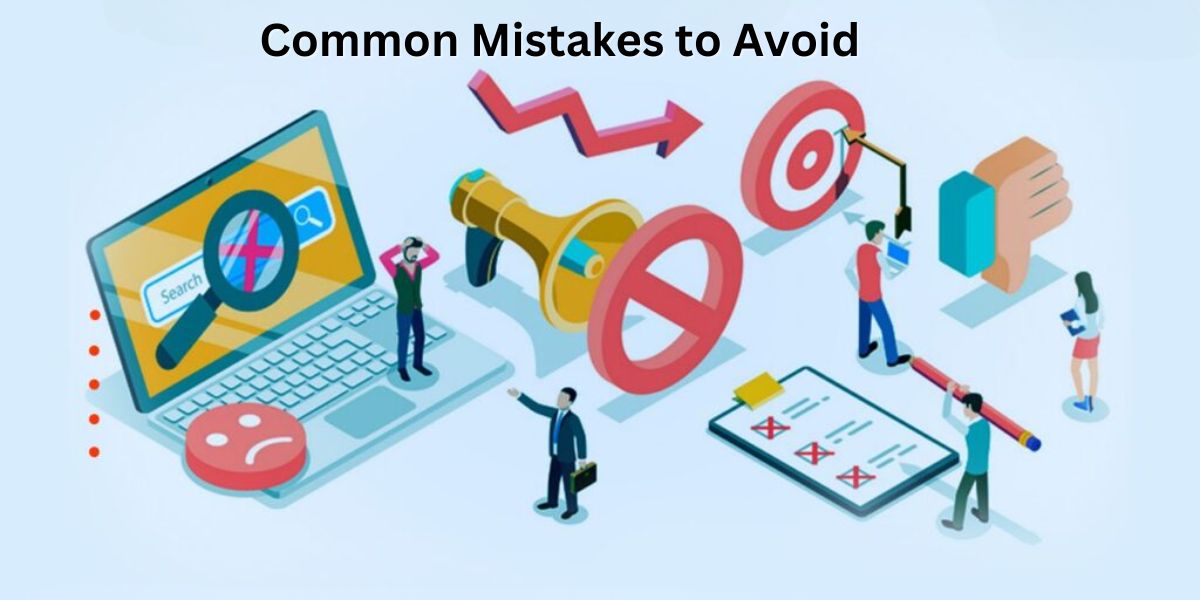Search engine optimization (SEO) has long been a foundational element of online visibility. However, user behavior has evolved. People now interact with voice assistants, expect immediate answers, and frequently search for services in their local area. To maintain relevance and visibility, businesses must integrate SEO, AEO, and GEO into a unified strategy.
This article explains how to connect these three key approaches, SEO, AEO, and GEO, to increase organic traffic, appear in answer engines, and rank well in local search results.
Understanding SEO, AEO, and GEO
What is SEO?

Search Engine Optimization (SEO) refers to methods for increasing the website’s ranking on search engine results pages (SERPs). It relies on high-quality content, strategic keyword usage, strong backlinks, and clean site architecture. The objective is to create organic traffic by way of greater visibility in search engines like Google and Bing.
By targeting relevant keywords, optimizing on-page elements, and building authority through backlinks, SEO connects your content with users who are actively searching. As algorithms evolve, businesses must regularly adapt their SEO approach to maintain effectiveness.
SEO (Search Engine Optimization) Stats
- As of 2024, approximately 50% of all internet traffic originates from mobile devices, underscoring the importance of mobile optimization in SEO strategies.
- Around 50% of all searches were voice-activated in 2020, and this trend has continued to grow, highlighting the need for voice search optimization.
- Over 94% of users prefer organic search results over paid advertisements, emphasizing the value of effective SEO practices.
- #1 ranking pages tend to get followed backlinks (from new referring domains) at a pace of between +5% and +14.5% per month.
- Long-form content gets an average of 77.2% more links than short articles.
- 94% of online content doesn’t receive external links. In fact, only 2.2% of content generates links from multiple websites.
What is AEO?

Answer Engine Optimization (AEO) focuses on preparing content for platforms that provide quick, direct answers like Google’s featured snippets or ChatGPT. These systems aim to serve immediate responses to user queries.
AEO emphasizes creating structured, informative content that answers specific questions clearly. It caters to conversational searches and is formatted to make it easier for AI systems to extract the right information. Proper formatting, brevity, and question-based headlines are essential for success in AEO.
AEO (Answer Engine Optimization) Stats
- ChatGPT has surpassed 400 million active weekly users, with over 5.2 billion monthly visits, showcasing the growing reliance on AI-driven answers.
- Approximately 58% of users have replaced traditional search engines with AI tools when searching for products or services.
- About 63% of websites report traffic originating from AI-based search engines, indicating the growing influence of AI in search behaviors.
Talk About Your Marketing Budget With Expert
What is GEO?

Generative Engine Optimization (GEO) refers to the process of optimizing content for AI-powered platforms that generate responses, such as ChatGPT, Google’s Search Generative Experience (SGE), and other generative answer engines. Unlike traditional local SEO, GEO involves crafting content that appears in AI-generated overviews, summaries, and conversational search results.
Effective GEO strategies include using question-based content, adding authoritative citations, incorporating statistics, and structuring pages for maximum relevance and context. GEO helps brands earn placements in AI-generated outputs, expanding reach across emerging discovery tools and conversational platforms.
GEO (Generative Engine Optimization) Stats
- Implementing Generative Engine Optimization (GEO) strategies can boost website visibility by up to 40% in AI-generated responses.
- Gartner predicts that by 2028, up to 25% of searches will be conducted through generative engines, underlining the importance of GEO.
- 70% of consumers already trust generative AI search results, and 79% are expected to use AI-enhanced search within the next year, indicating a significant shift in search behavior.
Charting Your Optimization Roadmap

Step 1: Conduct Keyword + Query Research Across SEO, AEO, and GEO
Begin with detailed keyword research aligned to each optimization type. For SEO, use tools like Ahrefs or Semrush to uncover high-intent keywords. For AEO, tools such as AnswerThePublic and AlsoAsked help identify common questions. For GEO, focus on terms commonly used in voice queries and AI-based searches that reflect real user conversations.
Create a keyword map that includes each type and identify overlaps. This forms the basis for building content that satisfies all three optimization angles.
Step 2: Build Pillar Pages + Cluster Content
Organize your content using a pillar-cluster approach. Pillar pages should address broad topics in-depth, while cluster pages focus on subtopics and link back to the pillar. This structure improves SEO through the clear topic hierarchy.
It also supports AEO by breaking down answers into digestible parts and enhances GEO when structured with clarity and supported by citations. Internally linking related articles increases topical authority and improves how content is understood by AI engines.
Step 3: Optimize Technical SEO and Schema Markup
Ensure your website runs efficiently. Page speed, mobile responsiveness, clean URLs, and secure connections are critical technical SEO elements. These elements contribute to how easily your content is discovered and indexed.
Add schema markup to give search engines additional context. Use FAQ, local business, and how-to schema types depending on your content. Structured data improves performance in both AEO and GEO, enabling clearer interpretation by AI models.
Step 4: Craft Concise AEO-Friendly Answers
When writing for AEO, use question-and-answer formats that are easy to scan. Start each section with a clear, direct answer and elaborate below. Keep responses short, around 50 words, when aiming for featured snippets.
Employ the use of bullet points and headings to split content and enhance clarity. This makes it easier for AI systems and voice assistants to extract relevant information, improving your chances of being selected.
Talk About Your Marketing Budget With Expert
Step 5: Expand with GEO-Ready, AI-Contextual Narratives
In GEO, ensure your content speaks to common AI-processed intents. This includes writing in natural language, citing reliable data sources, and including structured insights that AI tools can recognize and prioritize.
Structure your content in a way that aligns with how generative engines summarize and present information. Formatting, clarity, and contextual richness are key.
Step 6: Monitor Results and Adjust Strategy
Track your content’s performance using tools such as Google Analytics, Search Console, and platforms with AI integration. Track keyword rankings, featured snippet acquisition, and local search visibility.
Regular reviews help you refine content and optimize underperforming pages. This ensures your SEO, AEO, and GEO strategies remain aligned and effective.
Tools to Execute SEO, AEO, and GEO Strategies

- SEO Tools: Use Semrush, Ahrefs, and Moz to track backlinks, perform site audits, and uncover keyword opportunities. These tools are essential for improving SEO performance and gaining competitive insights.
- AEO Tools: Use AnswerThePublic, AlsoAsked, and Frase to uncover common user queries and structure content for direct, answer-focused optimization. These tools are especially effective for enhancing AEO performance and meeting search intent.
- GEO Tools: ChatGPT, Jasper, SurferSEO, and Clearscope are effective tools for creating content that meets local user intent and aligns with AI search trends. These platforms help you craft content that resonates with users while staying optimized for generative engine systems.
- Schema Tools: Merkle Schema Generator and Schema.org are useful tools for adding structured data to your website. They assist search engines in understanding your content better, which improves crawlability and enhances visibility across both local and AI-powered search results.
Using these tools provides a foundation to manage and scale your content strategy efficiently.
Integrating SEO, AEO, and GEO for Maximum Visibility

How SEO, AEO, and GEO Interconnect
A unified strategy combines the strengths of each approach. SEO attracts general search traffic, AEO places your content in featured snippets and AI answers, and GEO ensures your visibility in location-based queries.
For example, a well-optimized service page might include FAQ content for AEO and GEO increases your content’s chance of being selected by generative engines.
For example, a well-optimized article can include structured snippets for AEO and properly cited data that helps it surface in GEO outputs, all while maintaining strong SEO fundamentals.
Understanding Search Intent
Modern users often search in conversational tones or through voice assistants. Understanding their intent is crucial. Intent can be navigational, informational, or transactional, and tailoring content to match it improves engagement and discoverability.
AI tools can analyze trends and identify which questions are being asked most frequently. Aligning your content with these patterns enhances relevance across all three optimization areas.
Talk About Your Marketing Budget With Expert
Leveraging AI Tools for Optimization
AI platforms like Jasper and SurferSEO offer powerful ways to refine content. They help assess tone, keyword use, and structure. For GEO, tools like ChatGPT assist in generating content that’s tailored to generative systems and user context.
These platforms can surface insights and suggest improvements, making it easier to meet the criteria needed for SEO, AEO, and GEO simultaneously.
Building a Unified Strategy

Keyword Research Across SEO, AEO, and GEO
Use a combination of tools to collect and analyze keyword data. Google Trends, Bing, and AI-based engines provide different insights. For SEO, focus on commercial and informational terms. For AEO, target questions and voice search phrases. For GEO, analyze how users phrase queries in natural language and identify trending conversational keywords.
For Local SEO, prioritize geographic-specific terms, location-based phrases, and regional modifiers to connect with users in specific areas. Build a keyword database that segments each category but identifies overlapping opportunities for content development.
Optimizing Content for Featured Snippets and Direct Answers
To increase visibility in featured snippets, format content with clear headers and short, focused paragraphs. Start each answer with a direct statement and follow it with supporting details.
Add schema where applicable to help search engines categorize your responses. These methods improve your position in answer engines and enrich your site’s presence.
Talk About Your Marketing Budget With Expert
Optimizing for Voice Search
Voice queries are typically longer and more natural in tone. Think about how users ask questions and include those phrases in your content. Focus on long-tail keywords and conversational patterns.
This benefits all three optimization types and prepares your content for interaction with voice-enabled devices.
Advanced Techniques for SEO, AEO, and GEO

Schema Markup for Local and AI-Driven Search
Add schema to your site pages to enable rich results. Whether it’s business details for local searches or FAQ content for snippets, schema improves discoverability and content clarity.
Proper schema implementation supports both AEO and GEO by enhancing how AI and search engines interpret and display your content.
AI Overviews and AI-Generated Content
AI can support content development, but authenticity remains key. Use AI tools to assist with outlines or initial drafts, then review and refine manually.
Avoid generic or repetitive phrasing. Focus on quality, readability, and original perspectives. This ensures that AI-generated elements still meet high standards for SEO, AEO, and GEO.
Talk About Your Marketing Budget With Expert
Analytics and Continuous Optimization
Track and measure KPIs such as rankings, snippet appearances, and local visibility. Use platforms like Google Analytics, Bing Webmaster Tools, and AI-driven dashboards. Important SEO Reporting should also include monitoring crawl errors, indexing health, mobile usability, and core web performance.
Schedule regular audits to review performance and make data-informed adjustments. Effective strategy management depends on consistent evaluation and iteration.
Best Practices for Businesses

Staying Competitive in the Search Landscape
Search algorithms continue to evolve, favoring structured content and real-time relevance. Businesses that adopt SEO, AEO, and GEO practices gain broader visibility and stronger content impact.
Implementing a well-rounded content strategy ensures you’re ready for whatever direction search technology takes next.
Building Trust and Authority
Establishing authority requires consistent, high-quality content. Focus on credibility by referencing reliable sources, displaying customer reviews, and maintaining transparent business details.
Trust is a ranking signal in itself. When your content reflects expertise and helpfulness, it’s more likely to be preferred in search results across all optimization types.
Actionable Steps for Implementing a Unified Strategy

Clear, actionable steps to implement SEO, AEO, and GEO optimization:
- Start with comprehensive keyword research and a full content audit to uncover gaps and opportunities.
- Implement schema markup to support both local visibility (GEO) and AI-driven answers (AEO).
- Write concise, structured content that clearly answers common questions and aligns with voice search behavior.
- Utilize analytics tools to monitor rankings, traffic, and engagement, then adjust your strategy according to performance data.
Following these four steps helps create a well-rounded optimization plan that improves visibility across search engines, AI platforms, and local queries.
How Spreadme Digital Helps You Win Across SEO, AEO, and GEO

At Spreadme Digital, we deliver tailored strategies that align SEO, AEO, and GEO to amplify your online visibility across multiple search channels. Our process is grounded in thorough keyword research, user-focused content creation, and intelligent use of AI to ensure each digital asset supports your growth goals.
We help businesses get discovered in local searches, secure top spots in answer engines, and adapt content for natural, voice-driven interactions. Every campaign is crafted with both search engine requirements and user expectations in mind. With a blend of technical accuracy and strategic narrative, we make your brand appeal to the right people at the right time.
Conclusion
SEO, AEO, and GEO each bring unique strengths to a content strategy, but their combined impact is what drives maximum visibility. Throughout this guide, we explored how SEO establishes authority and structure, how AEO enhances your ability to answer user questions instantly, and how GEO connects your content with users through AI-generated responses.
Together, these strategies form a holistic framework that ensures your content reaches users whether they’re typing a question, speaking a voice search, or browsing for a nearby service. From conducting tailored keyword research and building structured content to optimizing technical elements and using schema markup, each component plays a vital role. Continuous monitoring and adaptation keep your efforts relevant and effective.
Contact us at Spreadme Digital to turn strategy into results. We help you rank higher, answer smarter, and connect locally so your brand is found where and when it matters most.
Get a Personalized Lead Generation Quote

















